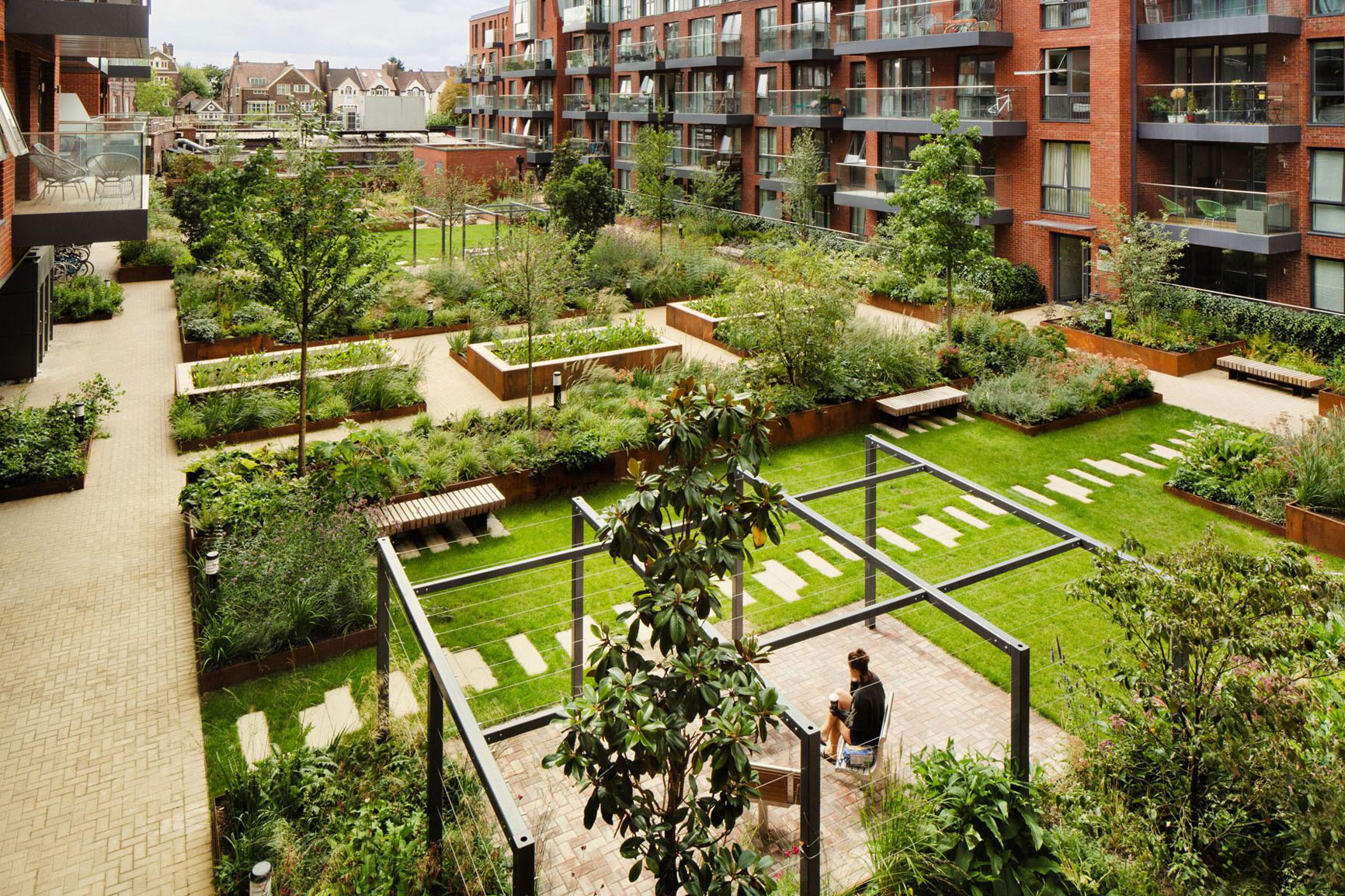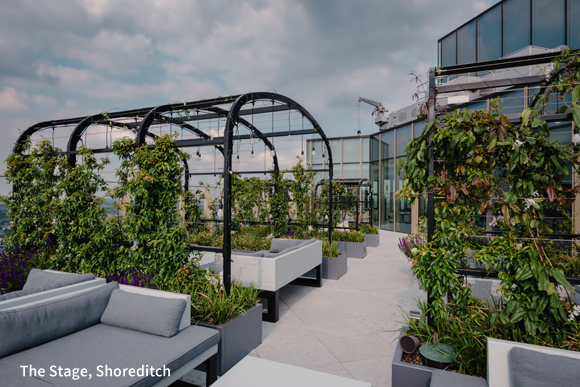
Urban Heat Island Effect: How Street Furniture Material Choices Impact Microclimate
The urban heat island (UHI) effect is being felt in full force across the world as temperatures soar in summer months. Concretised squares and side streets become ovens as they radiate heat from absorbed rays of the sun, but the solution to this problem is more widely achievable than many realise: street furniture.
Whether it’s benches, bollards, planters, bins or bike racks, they all play a part in shaping and regulating the microclimate. But it’s not just including these design elements, it’s picking the right materials that will lend themselves to reducing the local ambient temperature and help create a more comfortable cooler streetscape.
What is the Urban Heat Island Effect?
The Urban Heat Island effect is the result of the replacement of the natural landscape with the man made. Cities and large towns are layered, both floor and wall, with artificial materials and surfaces that both absorb and retain heat. This heat retention leads to an increase in the temperature of the microclimate by up to 12 degrees centigrade and in comparison to rural areas they can be warmer by up to 7 degrees centigrade.
The consequences of the urban heat island effect:
- Energy consumption increases due to the demand for cooling
- Increase in heat related illnesses such as heat stroke and dehydration particularly for children and the elderly
- Decrease in quality of life as the climate becomes less comfortable to move around in
- Air pollution due to increased ground level ozone and pollution reactions that lead to smog
Street furniture to mitigate the Urban Heat Island Effect
Although it may appear that material choice would be inconsequential for a bin, a bench or a cycle stand, at scale street furniture has a large role to play in reducing the UHI effect. Cumulatively we’re talking about a large amount of material being added to the city streets and squares. This is why material choice is vitally important:
Thermal Conductivity and Heat Retention
A key part to the equation is how much heat a material conducts, retains and then radiates. This varies largely between materials.
- Metal: Metal is a widely used material in the construction of street furniture and is commonly used for bins, planters, bike racks, and bollards. Metals heat up quickly in direct sunlight and radiate that heat into the microclimate for hours after the sun sets. They can also present a burn risk for users and pedestrians.
- Plastic and Composites: Depending on the exact composition plastics and composites generally have lower thermal conductivity but darker coloured materials still absorb heat and radiate it into the atmosphere.
- Wood: Like with most natural materials, wood stays cooler than metal or plastics due to its poor conductivity and nature as an insulator. For ultimate mitigation of heat retention, untreated wood should be preferred.
- Concrete and Stone: Like with brick walls and concrete paving, street furniture crafted from concrete and stone absorbs large amounts of heat throughout the day and then releases that heat slowly at night.

Surface Colours, Treatments and Albedo
The surface colour and treatment is just as important as the material considerations as this can strongly influence how much heat is absorbed versus reflected. Part of the calculation in determining how much heat is going to be absorbed is the Albedo measurement of a given finish or colour.
Albedo is the measurement of a body’s ability to diffusely reflect sunlight. The measurement is displayed as a fraction referencing the percentage of light reflected. Colours of finishes with a high albedo are going to reflect more light than those with a low albedo.
Selecting a darker finish or colour with a low albedo measurement (such as black and dark grey) leads to more sunlight absorption, higher surface temperatures and an increase in the ambient temperature.
Lighter finished street furniture or a high-albedo finish will reflect more sunlight leading to lower surface temperatures and less heat absorption.

Integrate with nature
Trees and plants have a significant impact on the urban heat island effect through shading, evaporative cooling and windbreaks. They go a long way to regulating the temperature of the microclimate through blocking the sun’s rays, absorbing the heat and releasing water vapour through a natural process called transpiration. By introducing a green canopy ambient temperatures can be lowered by as much as 10 degrees.
Street furniture’s placement around and incorporation with natural elements like trees and plants can both boost and take advantage of these cooling effects.
- By placing benches, bins and other furniture in the shade of trees at peak daylight hours the amount of heat absorbed by the furniture can be lessened.
- Modular furniture that combines planters with seating can harness the transpiration effects of plants to cool those looking to use the bench as well as the ambient temperature.
- Green roof walkways and green canopies can be installed in public squares or down alleys to create shade for pedestrians as well as the paving to prevent heat absorption.
- Including larger planters holding small and medium sized trees in locations where they can’t be planted can create more shade and passive cooling
Optimising Material Choices for Cooler Urban Spaces
These are our top tips for maximising the cooling potential of street furniture:
- Prioritise low heat retention materials such as wood, bamboo or treated composites
- Choose lighter finishes that are highly reflective reducing the amount of sunlight absorbed
- Integrate shading elements into the space to reduce general heat absorption from both the pavement and the street furniture
- Introduce green elements such as modular planter and bench combinations to take advantage of the transpiration process of plants and trees
- Continually monitor surface temperatures and experiment with different positioning and elements in the space to optimise for cooling
Many of the world’s hottest countries are taking or have already taken steps to mitigate the urban heat island effect, but as the climate changes even moderate temperature countries in the northern hemisphere are going to have to follow suit.
If you’d like more information on street furniture that can help combat the urban heat island effect, email us at sales@landmarkstreetfurniture.com or give us a call on 01686 689 198.

